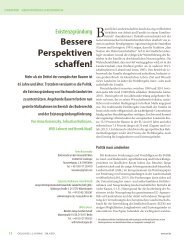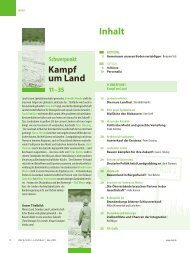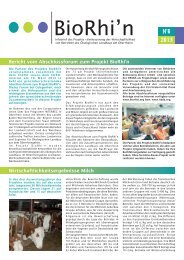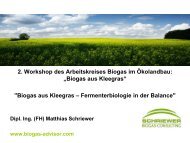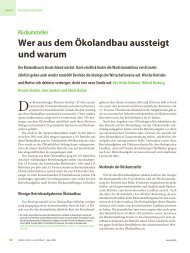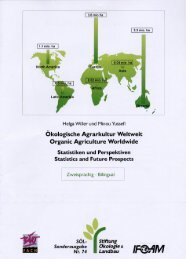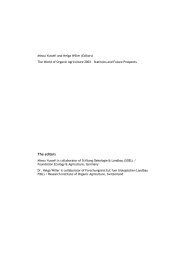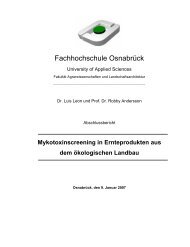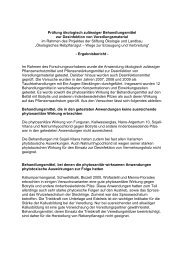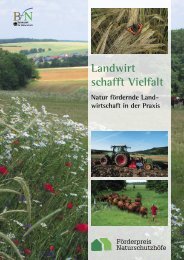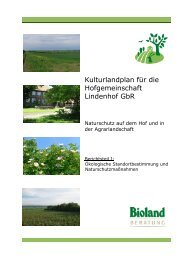the world of organic agriculture - Organic Eprints
the world of organic agriculture - Organic Eprints
the world of organic agriculture - Organic Eprints
You also want an ePaper? Increase the reach of your titles
YUMPU automatically turns print PDFs into web optimized ePapers that Google loves.
168<br />
The World <strong>of</strong> <strong>Organic</strong> Agriculture 2006<br />
structure. The National Institute <strong>of</strong> Agrarian Research INIA, is carrying a research in <strong>organic</strong><br />
meat.<br />
16.8 Success Stories<br />
Alberto Pipo Lernoud and Marcela Piovano<br />
16.8.1 Cuba: Urban Agriculture in Cuba<br />
Cuba is perhaps <strong>the</strong> best example <strong>of</strong> <strong>the</strong> possibility <strong>of</strong> feeding large populations with <strong>organic</strong><br />
products at low cost. Due to <strong>the</strong> crisis in <strong>the</strong> Soviet Block in <strong>the</strong> 1980s, Cuba was unable to buy<br />
agrochemical inputs for its highly centralized, input dependent <strong>agriculture</strong>.<br />
By 1990, Cuba had lost 85 percent <strong>of</strong> its imports. So <strong>the</strong> new policy was to lower <strong>the</strong> need <strong>of</strong><br />
inputs and oil and turn <strong>the</strong> farms into self-reliant units, recycling fertility and controlling pests<br />
with <strong>organic</strong> methods. Almost fifteen years later, Cuba is probably <strong>the</strong> biggest producer <strong>of</strong> <strong>organic</strong><br />
vegetables in <strong>the</strong> <strong>world</strong>, and most <strong>of</strong> it is done in small urban plots with a highly diversified<br />
output and a massive network <strong>of</strong> simple laboratories that develop highly sophisticated biological<br />
pest control products at very low prices.<br />
Due to <strong>the</strong> poor quality <strong>of</strong> <strong>the</strong> soil, all urban <strong>agriculture</strong> is done in closed raised beds or containers,<br />
filled with <strong>organic</strong> matter and soil mix, usually brought from outside <strong>the</strong> city.<br />
Many gardeners combine compost and soil, and o<strong>the</strong>rs mix cachaza, <strong>the</strong> waste product from<br />
sugar cane. The cultivation methods are based on <strong>the</strong> principles <strong>of</strong> <strong>organic</strong> <strong>agriculture</strong>. Each<br />
organoponico has an area that is dedicated to <strong>the</strong> production <strong>of</strong> worm humus. As horses and<br />
animal power in general have had an impressive resurgence in Cuba due to <strong>the</strong> limited access to<br />
oil, <strong>the</strong>re is lots <strong>of</strong> manure available.<br />
In <strong>the</strong> municipality <strong>of</strong> Cienfuegos <strong>the</strong>re are approximately 102 organoponicos (urban plots with<br />
vegetables), 63 are semi-private and 39 are managed by state enterprises. Cienfuegos, which<br />
is considered <strong>the</strong> “capital <strong>of</strong> urban <strong>agriculture</strong> in Cuba” produces almost 100 grams <strong>of</strong> fresh<br />
vegetable per capita per day.<br />
16.8.2 Bi<strong>of</strong>eria in Lima, Perú<br />
The Bi<strong>of</strong>eria in Miraflores, a neighborhood in Lima, Perú, started on December <strong>the</strong> 4th 1999.<br />
It was organized with <strong>the</strong> help <strong>of</strong> <strong>the</strong> municipality. Since <strong>the</strong>n, it is carried every Saturday in<br />
Reducto Park from 8 a.m. to 2 p.m. It spans for almost a block (100 meters) in <strong>the</strong> quietest edge<br />
<strong>of</strong> <strong>the</strong> Park.<br />
70 percent <strong>of</strong> <strong>the</strong> fair participants are “productores del campo” (farmers), representing more than<br />
300 farmers from Piura, Cajamarca, Huañaco, Pasco, Junin; Huancavelco, Ico, Arequipa, Cusco,<br />
Madre de Dios and Lima. There are more than 350 food products, including fruits, vegetables,<br />
breads, jams, c<strong>of</strong>fee, milk products from cows & goats, chicken, eggs, seeds, etc. All producers<br />
and processors are certified. Every producer must fill a document that states <strong>the</strong> <strong>of</strong>fered products<br />
& prices.



